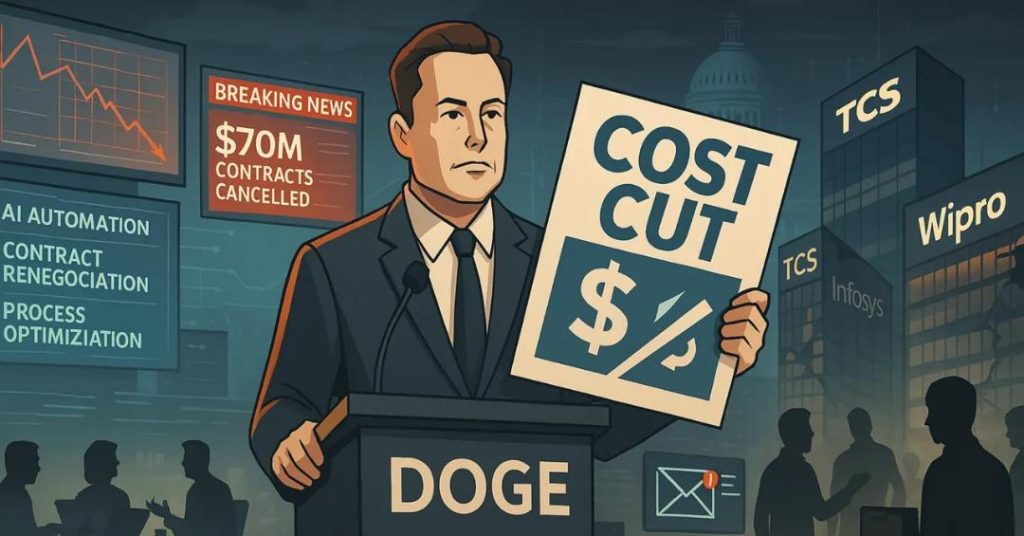
How is Elon Musk’s DOGE reshaping tech?
In a recent move that has sent shockwaves through the tech industry, Elon Musk’s aggressive cost-cutting measures at DOGE (Dogecoin) are forcing companies to rethink their contracts, layoffs, and innovation strategies. The impact of DOGE’s cost-cutting is not limited to the cryptocurrency space alone; it is having a ripple effect across the technology sector, pressuring even major IT players like TCS and Infosys to re-evaluate their operations.
The DOGE Effect
DOGE, a cryptocurrency founded in 2013, has seen a significant surge in popularity in recent months, thanks to Elon Musk’s involvement. As the CEO of DOGE, Musk has taken drastic measures to cut costs and increase efficiency. This includes slashing government deals, renegotiating contracts, and implementing layoffs to reduce overhead costs. The move is seen as a bold attempt to revolutionize the cryptocurrency space and make DOGE more competitive in the market.
Impact on the Tech Industry
The DOGE effect is not limited to the cryptocurrency space; it is having a broader impact on the tech industry as a whole. Companies that have traditionally relied on government contracts and large-scale projects are now finding themselves under pressure to adapt to the new reality. Major IT players like TCS and Infosys, which have historically had strong ties with the government sector, are being forced to rethink their strategies and focus on more cost-efficient and innovative solutions.
Rethinking Contracts and Layoffs
One of the most significant impacts of DOGE’s cost-cutting is the pressure it is putting on companies to re-evaluate their contracts. In the past, companies have relied heavily on long-term contracts with government agencies and large corporations. However, with DOGE’s aggressive cost-cutting, companies are now being forced to renegotiate these contracts or risk losing them.
Additionally, the layoffs that have accompanied DOGE’s cost-cutting measures are also having a significant impact on the tech industry. Many companies are now finding themselves needing to reduce their workforce to maintain profitability, which can have a devastating impact on employees and communities.
Innovation and Automation
In response to the DOGE effect, companies are now being forced to focus on innovation and automation to stay ahead of the curve. With costs rising and government deals being slashed, companies are being forced to prioritize efficiency and productivity. This has led to a renewed focus on automation, AI, and machine learning, which can help companies streamline their operations and reduce costs.
Clear Communication
One of the most critical aspects of surviving the DOGE effect is clear communication. Companies must be transparent with their employees, customers, and stakeholders about the changes they are making and the reasons behind them. This can help build trust and confidence, even in the face of uncertainty and change.
Strategies to Consider
In light of the DOGE effect, companies must consider the following strategies to survive and thrive in this new landscape:
- Focus on innovation: Companies must prioritize innovation and automation to stay ahead of the curve and reduce costs.
- Rethink contracts: Companies must be prepared to renegotiate contracts or risk losing them.
- Streamline operations: Companies must focus on reducing overhead costs and increasing efficiency.
- Communicate clearly: Companies must be transparent with their employees, customers, and stakeholders about the changes they are making.
- Diversify revenue streams: Companies must diversify their revenue streams to reduce dependence on government contracts or large-scale projects.
Conclusion
Elon Musk’s aggressive cost-cutting at DOGE is sending shockwaves through the tech industry, forcing companies to rethink their contracts, layoffs, and innovation strategies. The impact of DOGE’s cost-cutting is not limited to the cryptocurrency space alone; it is having a broader impact on the tech industry as a whole. To survive and thrive in this new landscape, companies must prioritize innovation, automation, and clear communication, and be prepared to adapt to the changing needs of the market.
Source:






